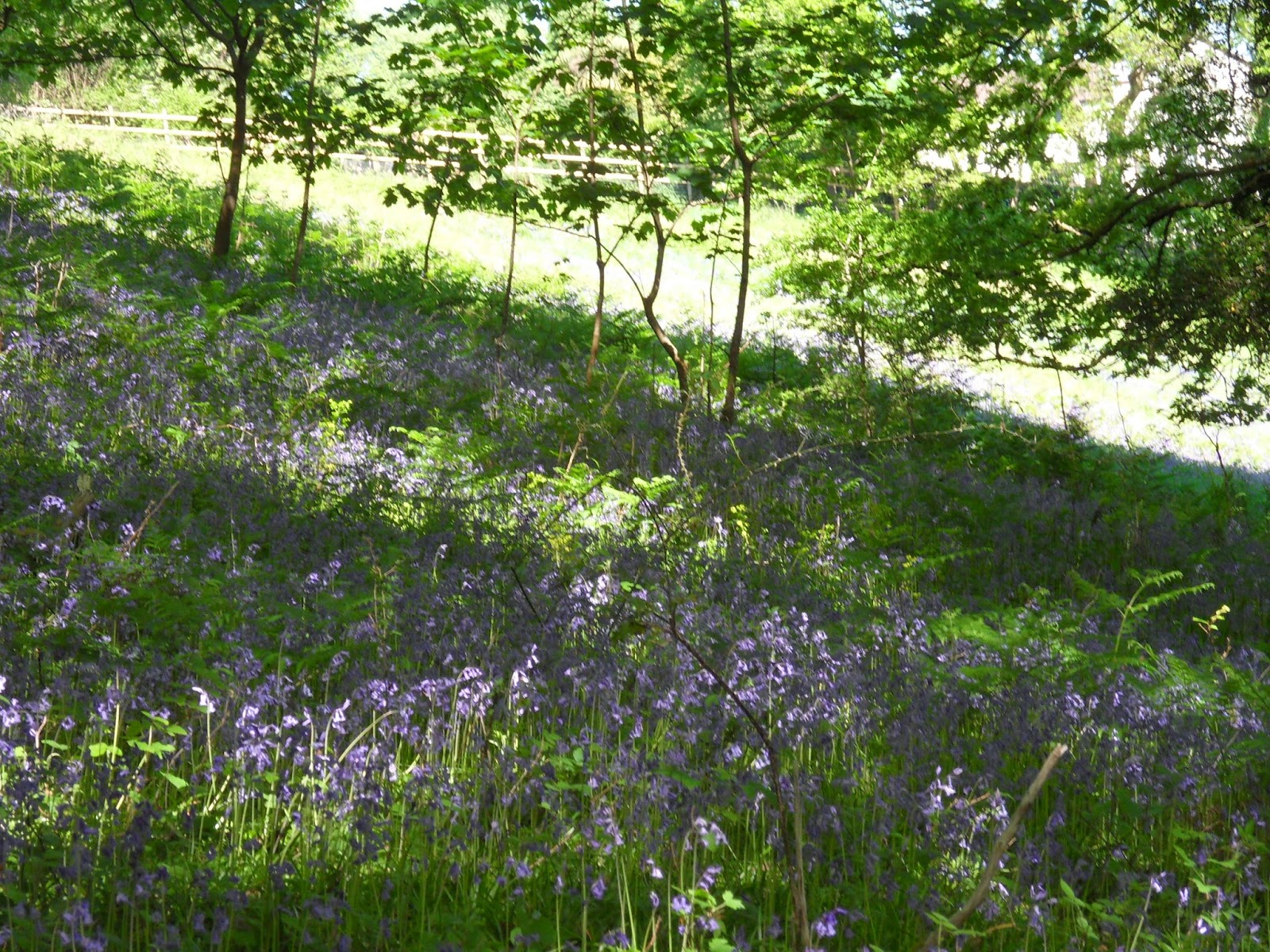With such a visual joy outside the window, it seems a little perverse to be looking forward a couple of months to when bluebells will be with us. To explain, this leap to late April was prompted by a Facebook link to a #lovecornwall ad posted by a friend (thank you, JP, the Sage of Bray Shop). I was intrigued by the title 'If you hear a bluebell ring' and really enjoyed the accompanying video clip. If a bluebell rang, I wonder what it would sound like? Whatever the sound, I think 'tintabulation' would be an apt word to use for it. Enjoy the video and imagine the scent of a thousand bluebells wafting over you.
I might not have known that almost half of the global population of our Common bluebell (Hyacinthoides non-scripta) is found in the British Isles but I did know that hybridisation with the Spanish Bluebell (Hyacinthoides hispanica) is a big problem in some areas, although quite how and when these aliens got into the British countryside remains a bit of a mystery (no doubt some UKIP supporters will be saying "These damn EU migrants coming over here pinching our woodlands etcr).
Something else I didn't know about bluebells is where the non-scripta term came from. It's Latin, of course, and means 'not marked or not written'. It refers to a Greek myth in which, when Hyacinthus died, a flower sprang up from his grave. The tears of his lover, the god Apollo, falling on the plant, left markings on the petals which read “Alas!” There are no markings on Hyacinthoides non-scripta and their absence distinguishes bluebells from the flower of the mythological Hyacinth.
And here are some bluebell facts that we all really need to know:
* In the Bronze Age, people used bluebell glue to attach feathers to their arrows
* The Victorians used the starch from crushed bluebells to stiffen the ruffs of their collars and sleeves
* Bluebell sap was used to bind pages to the spines of books
* According to folklore, hearing a bluebell ring is a sign of impending death. Fairies appear to be spared this fate.
* Bees can 'steal' nectar from bluebells by biting a hole in the bottom of the bell, reaching the nectar without pollinating the flower.
* The ability to turn a bluebell flower inside out is the sign of a great lover. Guess what I can do?
No doubt we'll be visiting some of our local bluebell woods at the appropriate time. Here are just two we have walked through in the past couple of years.
 |
| Alongside the old Plym Valley railway line, now a rather nice walking trail. |
 |
| Burrator Woods on the western fringes of Dartmoor, possibly one of the best places to see bluebells? |

1 comment:
St Neot for bluebells.... Head towards Trago, take the turning for Carnglaze Cavern, along there on the right. Proper!
Post a Comment